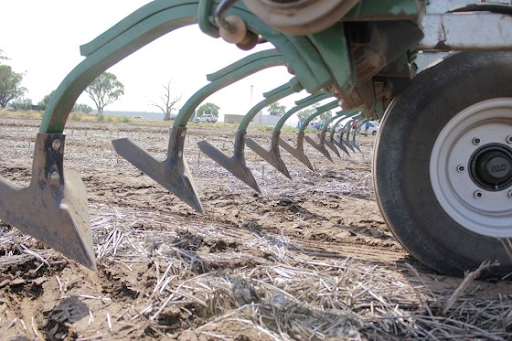Herbicide resistance occurs when, as the same herbicide or herbicide groups are applied each year, weeds and undesirable plants begin to adapt and develop a resistance to the herbicide. This development of resistance is an example of a fast paced evolutionary change through natural selection. As the same herbicide is applied year after year, resistant plants are naturally selected and survive to the next year. The resistant weeds will spread (as weeds do) and eventually herbicide resistant plants dominate the whole population. A weed population is defined as resistant when a herbicide loses effectiveness. While there is no explicit standard, a 20% survival rate after application is often used. Herbicide resistance is considered permanent in weeds and their subsequent offspring.
Defining herbicide tolerance?
Distinct from herbicide resistance is herbicide tolerance, the natural inherited ability of a plant to survive a chemical application. Unlike herbicide resistance, there is no natural selection involved in this process, rather herbicide tolerance is the resistance to certain herbicides through a natural tolerance.
When a population of a weed species develops resistance, the results can be mixed. Herbicides are typically divided into mode of action groups, or MOAs, and then further divided into subgroups based on their chemical composition and active ingredients. In some cases, plant populations will develop “cross-resistance”, the resistance to an entire group of chemicals. Cross resistance can develop across herbicide subgroups, or across herbicide action groups.
Testing Herbicide Resistance
A number of testing methods for herbicide resistance can be performed, either in the field or by testing a plant sample. In herbicide resistance and susceptibility testing, seeds are sent to an offsite lab where they are grown, sprayed, and assessed for reactions to different products. Approximately 3000 seeds of each weed is required for a multiple resistance test.
Developing new strategies at Iowa State Extension
According to Iowa State University Extension weed specialist Dr. Prashant Jha, the tools available for managing weeds have grown fewer. So where is there to go?
“... [W]hen we deal with soybeans with glyphosate and PPO resistance, waterhemp populations are a concern,” said Dr. Jha in an interview with Brownfield. “So there is a good bit of acceptance here in Iowa (by) producers regarding using some cultural strategies, and mechanical strategies, even.”
Research has shown that row-crop cultivation can be effective, and cover crops have shown promising weed suppression. “For example, using 13 inch (for) soybeans with early canopy development, it’s an organic complimentary strategy that helps to improve the herbicide efficacy in weed control and prevent failures,” said Dr. Jha. An emerging weed control method has to do with harvest weed seed control, and points to success in Australia using a seed destructor that he thinks might have a place in the U.S.
Prevention and Management
Herbicide resistance is a problem that affects growers worldwide, and there are a variety of methods for weed management that can help to avoid or reduce the development of resistance. Simple steps such as alternating herbicides year to year, rotating between herbicide subgroups, and using tank mixes with two or more herbicide groups when spraying can reduce the likelihood of weeds developing resistance. These mixture and rotation methods are essentially based on the idea that if a weed has developed resistance to chemical A, chemical B from a different herbicide group will kill it, preventing the spread of further resistant seeds.
Much like integrated farm management, integrated weed management strategies combine a variety of methodologies and measures to reduce weed populations. In IWM, cultural and mechanical weed control methods are complemented with traditional chemical weed control.
Mechanical weed control methods include traditional hand weeding, but also take advantage of new and emerging technology to automate the physical removal of weeds. In Australia, Engineers and researchers from the University of Western Australia (UWA) and the University of Sydney have developed a mechanical weeding machine to combat high rates of herbicide resistant weeds across the continent. Their six metre wide “weed-chipper” uses tines to till out weeds that are detected using commercially available weeding cameras such as the weed seeker.

Cover cropping is another aspect of integrated weed management that is particularly common here in Ontario. Cover crops play an important role in maintaining soil quality and to reduce erosion, but are also an effective component in weed control. Essentially a cover crop is a plant that is planted in what would otherwise be a fallow area. Cover cropping is particularly effective in the control of annual weeds. Research from the Iowa State University has shown a strong correlation between the amount of cover crop and the level of weed control provided. Other recommendations include inter-row cultivation, crop rotation, or any non-monocropping planting patterns, as mono-cropping encourages the use of single herbicides each year.
There are over 250 species of weeds with confirmed herbicide resistance, according to the Herbicide Resistance Action Committee, and this growing resistance impacts every aspect of the agricultural sector. Croptracker’s spray tracking system allows growers to accurately calculate tank mixes and application rates, to ensure that only the necessary chemical amounts are applied, and to reduce the risk of developing resistances.
Interested in learning more about Croptracker? Learn more about our Farm Management Software, or book a demonstration to schedule a meeting with our product experts.
And as always, if you're ever stuck, never hesitate to e-mail us at support@croptracker.com or Live Chat with us by clicking the green speech bubble ![]() in your bottom right-hand corner. We're always happy to help, so Croptracker can make your farm more efficient, safer, and more profitable!
in your bottom right-hand corner. We're always happy to help, so Croptracker can make your farm more efficient, safer, and more profitable!


